
With over 30 years of excellence, Minelab continually delivers the World’s Best Metal Detection Technologies, creating premium quality products for your greatest detecting advantage. Minelab’s superior technology was initially conceived through the inventive genius of physicist Bruce Candy. His quest to improve metal detector capabilities has resulted in more patents for new metal detection technologies over the past 30 years than any of Minelab’s competitors.
Strongly focused on research and development, Minelab has the largest engineering team in the metal detection industry with more than 30 scientists, engineers and technicians committed to producing the next generation of detectors.
You can view our list of current patents here.
You can read more about the specific technologies in your detector, below:

Multi-IQ Simultaneous Multi-Frequency
Low frequencies typically give more depth on large targets than high frequencies, which are usually more sensitive to small targets.
With EQUINOX you can operate across the full spectrum of frequencies simultaneously for maximum results.

*20 kHz and 40 kHz not available as single operating frequencies in EQUINOX 600. Multi-IQ frequency range shown applies to both EQUINOX 600 and 800. | This diagram is representative only. Actual sensitivity levels will depend upon target types and sizes, ground conditions and detector settings.
The EQUINOX 600 offers a choice of 3 single frequencies and the EQUINOX 800 offers the choice of 5 single frequencies. Both models cover a much broader range of targets when operating in Multi than any one single frequency can, however, if excessive ground noise is present in a particular detecting location, switching into a single frequency can help to eliminate this.

5F×8 (Five Frequency Times Eight) provides five individual transmit frequencies in the one metal detector, selectable at the push of a button. Each transmit frequency optimises the detector for different size targets and conditions. EQUINOX 800 offers 5 single frequencies of 5, 10,15, 20, and 40 kHz, giving an 8 times range or ratio from 5 to 40, hence the 5F×8 technology designation.
The individual selectable frequencies in EQUINOX 800 are:
Having five selectable frequencies gives the versatility that is equivalent to five conventional single frequency detectors.
Note that EQUINOX Series detectors also feature Multi-IQ technology which allows you to operate all available single frequencies plus more, simultaneously. The option to operate your detector in a single frequency can be helpful if you are experiencing excessive ground noise when using the Multi-Frequency setting.

3F×3 (Three Frequency Times Three) provides three individual transmit frequencies in the one metal detector, selectable at the push of a button. Each transmit frequency optimises the detector for different size targets and conditions. EQUINOX 600 offers 3 single frequencies of 5, 10, and 15 kHz, giving a 3 times range or ratio from 5 to 15, hence the 3F×3 technology designation.
The individual selectable frequencies in EQUINOX 600 are:
Having three selectable frequencies gives the versatility that is equivalent to three conventional single frequency detectors.
Note that EQUINOX Series detectors also feature Multi-IQ technology which allows you to operate all available single frequencies plus more, simultaneously. The option to operate your detector in a single frequency can be helpful if you are experiencing excessive ground noise when using the Multi-Frequency setting.

ZVT (Zero Voltage Transmission) creates ultra‑constant high-power opposite polarity magnetic fields, increasing gold sensitivity. This innovative technology detects gold nuggets at extreme depths.
ZVT technology goes to the NEXT LEVEL for all serious gold prospectors, providing substantially improved depth. No longer will you be limited to using either sine wave continuous VLF transmission detectors, that struggle in mineralised ground, or square wave PI transmission detectors, that can be insensitive to varying gold sizes and compositions.
Minelab's new flagship gold detector, the GPZ 7000 is equipped with exclusive Zero Voltage Transmission (ZVT) technology, developed by Bruce Candy, and state-of-the-art features, the GPZ 7000 offers the deepest ground penetration and represents the most significant advancement in gold detecting technologies in years. This revolutionary gold detector will discover the deepest gold in mineralised ground and has the highest sensitivity available to detect even the smallest traces of gold.



The Super‑D smart coil consists of a central transmit winding and two outer receive windings. This configuration greatly decreases interference from magnetic soils, reducing ground noise.


GPSi uses the high performance and flexibility of a u-blox GPS positioning engine to seamlessly integrate location and time data with detector settings and target information. This creates WayPoint, FindPoint and GeoHunt files that are compatible with XChange 2.


Wi-Stream uses efficient low-power digital audio transmission to achieve no perceivable audio time lag (<10 ms) between the Wi-Stream enabled detector and the WM Wireless Module. With multiple channel capability, this wireless technology provides reliable communication with maximum sound quality.
Wi-Stream technology is offered in a range of Minelab detectors, however the WM modules are not cross compatible between detectors.
WM module and detector compatibility:

MPS (Multi Period Sensing) is Minelab’s advanced Pulse Induction (PI) technology that transmits pulses of different time periods. MPS also samples the receive signal at multiple time periods allowing target signals and ground signals to be separated. This effectively removes the ground signal from even the most highly mineralised ground while still being sensitive to both small and deep gold. This achieves superior depth in extremely mineralised ground.



DVT (Dual Voltage Technology) is Minelab’s advanced Pulse Induction technology that uses pulses with two voltage levels to further enhance MPS. The two voltage levels work in combination with the different time period pulses transmitted by MPS to increase the amount of power transmitted into the ground. DVT also allows more of the ground signal to be removed, further increasing detection depth and sensitivity. This achieves ultimate depth in extremely mineralised ground.


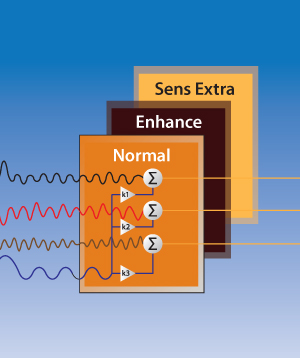
 SETA (Smart Electronic Timing Alignment) is a highly complex method of matching the characteristics of individual Timings with continuous measurements from the surrounding electromagnetic environment, such as the earth’s magnetic field. This gives the advantage of improved detector performance through the complete removal of noise signals. The sensitivity across all Timings is increased, therefore SETA allows more gold to be found than any other metal detector technology.
SETA (Smart Electronic Timing Alignment) is a highly complex method of matching the characteristics of individual Timings with continuous measurements from the surrounding electromagnetic environment, such as the earth’s magnetic field. This gives the advantage of improved detector performance through the complete removal of noise signals. The sensitivity across all Timings is increased, therefore SETA allows more gold to be found than any other metal detector technology.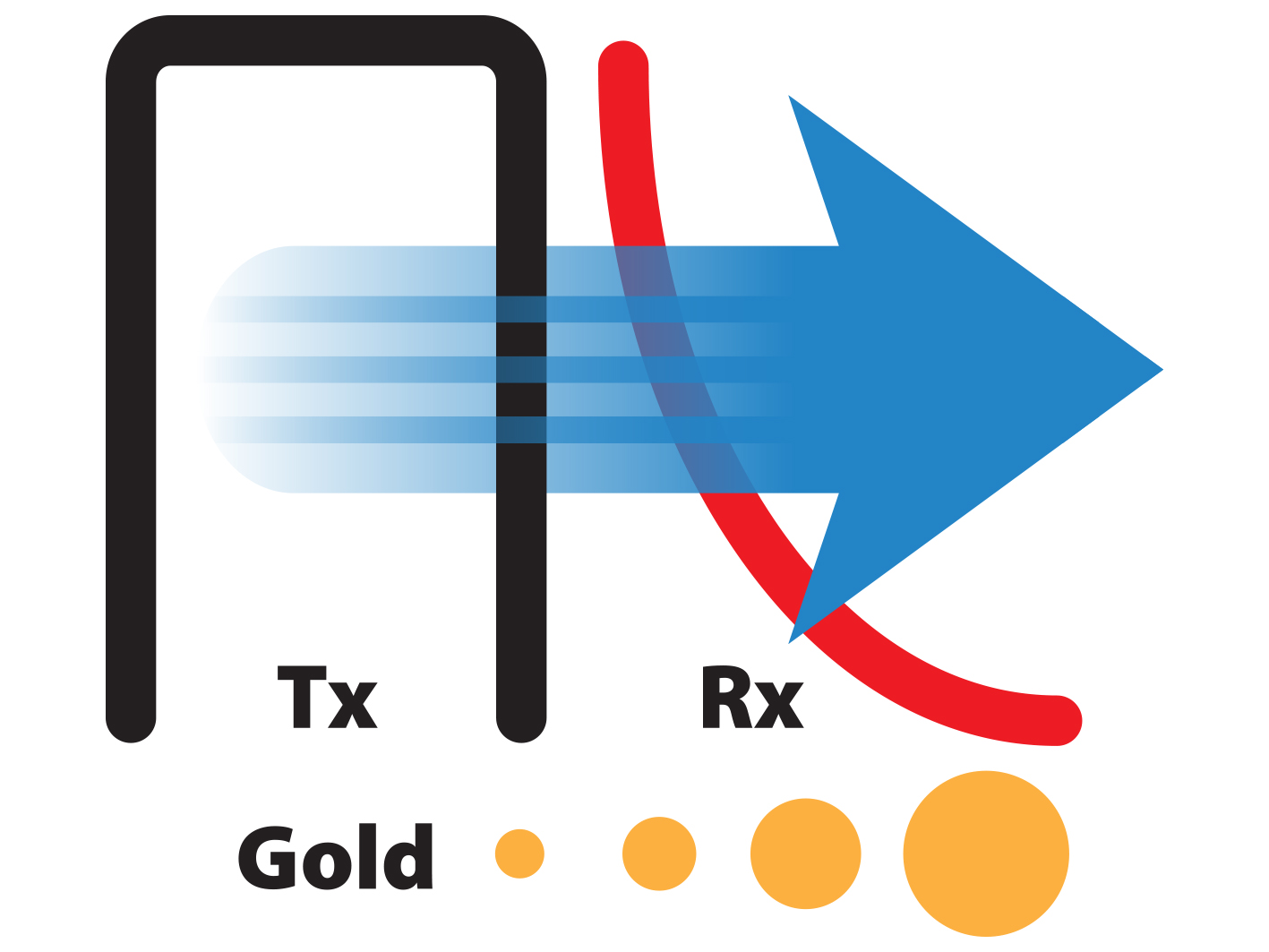
 MPF (Multi Period Fast) technology incorporates extremely fast Pulse Induction switching between Transmit (Tx) and Receive (Rx) detector signals. Therefore minimal residual transmit signal is present during the receive cycle, enabling clear sharp detection of very small gold.
MPF (Multi Period Fast) technology incorporates extremely fast Pulse Induction switching between Transmit (Tx) and Receive (Rx) detector signals. Therefore minimal residual transmit signal is present during the receive cycle, enabling clear sharp detection of very small gold.
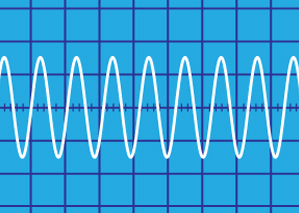


 3F (Three Frequency) provides three different transmit frequencies in the one metal detector, selectable at the flick of a switch. Each transmit frequency optimises the detector for different size targets and conditions. The three transmit frequencies are:
3F (Three Frequency) provides three different transmit frequencies in the one metal detector, selectable at the flick of a switch. Each transmit frequency optimises the detector for different size targets and conditions. The three transmit frequencies are:
Having three selectable frequencies gives the versatility that is equivalent to three conventional single frequency detectors.

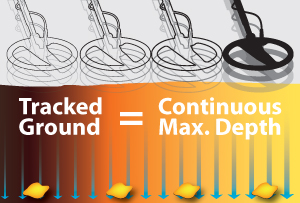 ACCU-TRAK continuously measures the level of ground mineralisation while the detector’s coil is swept in search of targets. Any changes in mineralisation, which can occur quite quickly, are analysed and the Ground Balance level automatically adjusted.
ACCU-TRAK continuously measures the level of ground mineralisation while the detector’s coil is swept in search of targets. Any changes in mineralisation, which can occur quite quickly, are analysed and the Ground Balance level automatically adjusted.
ACCU-TRAK ensures the detector is always correctly ground balanced and operating at maximum depth and sensitivity at all times with minimum effort.

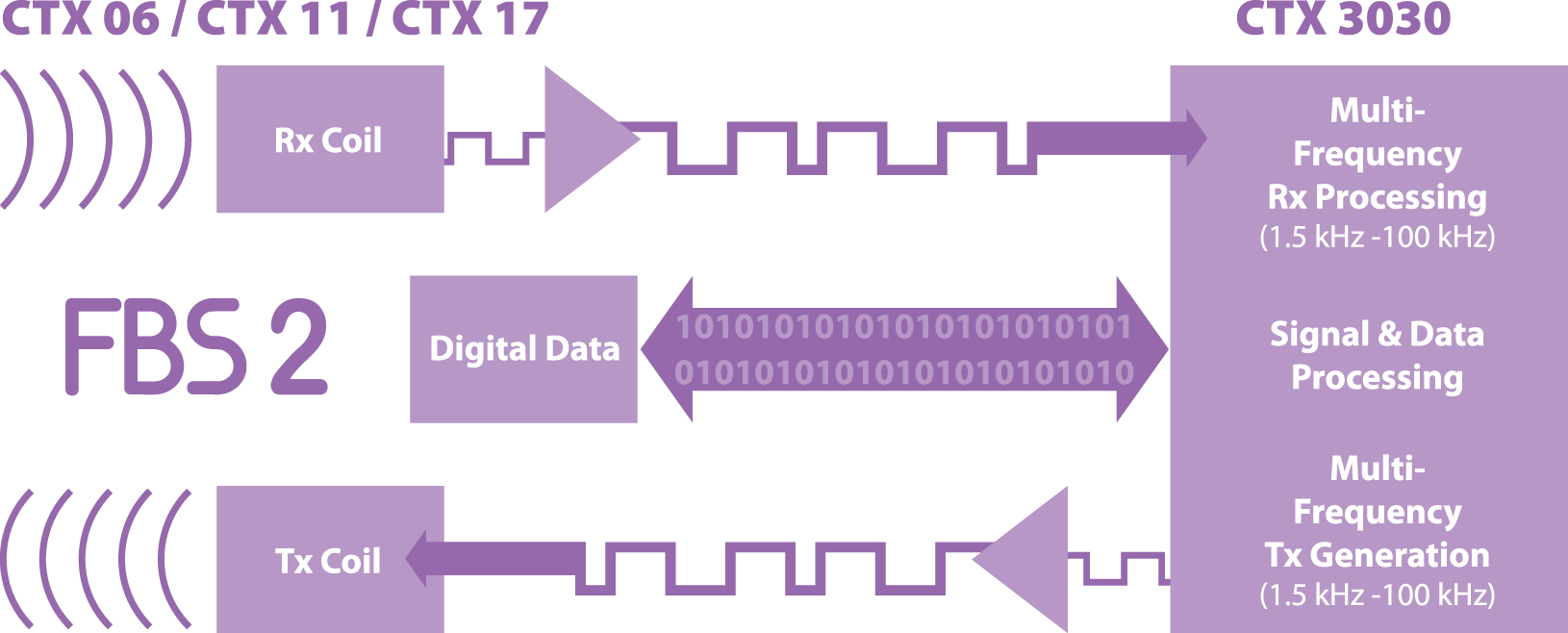
FBS 2 combines Minelab's FBS multiple frequency rectangular-wave transmission (1.5 kHz –100 kHz) with advanced digital coil-to-detector communications. The precisely calibrated smart coils and detector electronics allow advanced signal analysis for more accurate detection.

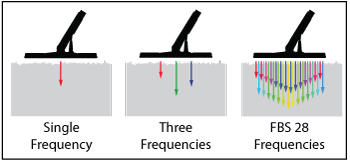
FBS (Full Band Spectrum) simultaneously transmits, receives and analyses a full band of multiple frequencies. This provides the detector’s electronics with even more information about a target and the surrounding environment than is possible with single frequency or BBS technology. This has a number of advantages, including:
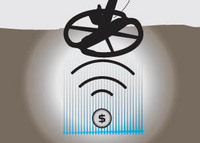 Find Every Target Type & Size with Every Sweep
Find Every Target Type & Size with Every SweepGenerally, high transmit frequencies are more sensitive to small targets and low transmit frequencies give more depth on large deep targets. FBS simultaneously transmits and analyses a full band of multiple frequencies from 1.5 kHz to 100 kHz and is therefore sensitive to both very small and large deep targets at the same time. This means you only need to cover the ground once and can be confident you’re not leaving ANY valuable treasure behind.
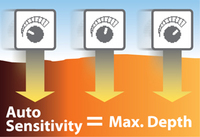 Automatic Sensitivity & Ground Compensation for Maximum Depth
Automatic Sensitivity & Ground Compensation for Maximum DepthAs you sweep the coil in search of targets, Automatic Sensitivity and Ground Compensation monitor the full band of frequencies for changes in ground mineralisation. Whenever the level of ground mineralisation changes the sensitivity is automatically adjusted to maintain maximum depth. The ground compensation circuitry removes false signals caused by fast changing levels of ground mineralisation. Both of these advanced features work together to maintain maximum detection depth and sensitivity, allowing you to concentrate on listening for targets.
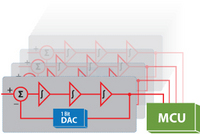 Extremely Accurate Multi-Channel Signal Conversion
Extremely Accurate Multi-Channel Signal Conversion
FBS uses multiple channelled Sigma-Delta analogue-to-digital converter technology to digitise the analogue signals received by the search coil. This ultra-fast processing, using a digital reference (1 bit DAC), provides the microcontroller (MCU) with detailed information about the ground conditions and targets. This gives FBS the ability to precisely separate target signals from ground signals for maximum detection depth. It also provides Smartfind with the necessary high resolution target data to accurately plot targets.
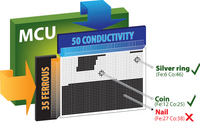
Smartfind 2D Discrimination (not used in Safari detector)
Minelab’s exclusive 2D Discrimination technology analyses a target’s ferrous (Fe) and conductive (Co) properties simultaneously. This revolutionary approach is the most accurate technology available for determining whether a target is treasure or trash.
The information can be heard as different Fe-Co audio tones, as well as being displayed numerically and graphically on a 2D scale. Individual segments or larger areas of the display can be shaded to reject unwanted targets.


Find Different Target Types & Sizes with Every Sweep
Generally, high transmit frequencies are more sensitive to small targets and low transmit frequencies give more depth on large deep targets. BBS simultaneously transmits and analyses a broad band of multiple frequencies from 1.5 kHz to 25.5 kHz and is therefore sensitive to both small and large deep targets at the same time. This means you only need to cover the ground once, allowing you to find more treasure.
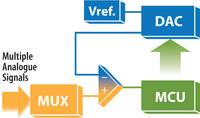
Accurate Multi-Channel Signal Conversion
BBS analyses multiple signal channels through a technique called multiplexing (MUX). These signals are compared to a digital reference (Vref. and DAC). The end result is high resolution accurate target signals that can be identified by the detector’s microcontroller (MCU). This analogue-to-digital conversion technique allows BBS to separate ground signals from target signals, achieving great depth and stability in difficult conditions.


In-Coil Signal Booster
RCB (Receive Coil Boost) circuitry greatly amplifies weak target signals, from small and deep targets, inside the search coil, where the signals are received. This has three main advantages over standard techniques of amplification inside the control box:

VFLEX uses state of the art digital electronics to enhance standard single frequency detection technology. This has the advantage of providing dependable performance and improved immunity to outside interference. VFLEX technology also has an added advantage that changing the detector’s coil also automatically changes the detector’s operating frequency. This means that an X-TERRA detector can operate at different frequencies allowing the detector to be easily modified to suit different detecting conditions.
VFLEX provides increased detecting performance with perfect sine wave transmission, an in-coil signal booster and coil selectable transmit frequencies.
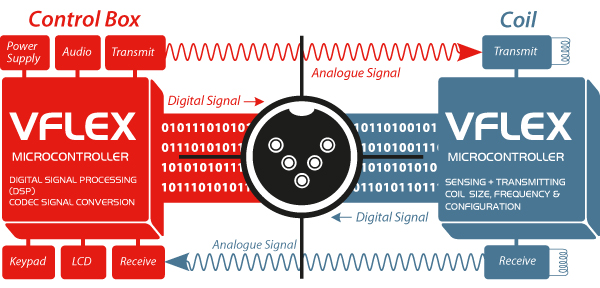
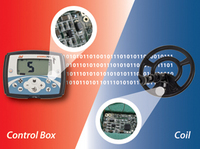
World’s First All-Digital Metal Detectors
VFLEX transforms conventional single frequency metal detection technology by including two microcontrollers (miniature computers), one inside the control box and one inside the coil. Every time the detector starts up, the microcontrollers establish communication via a digital data link. The coil microcontroller communicates the coil’s configuration, size and exact frequency, so the control box can generate a perfectly matched transmit signal. This significantly reduces distortion and increases Target ID accuracy.
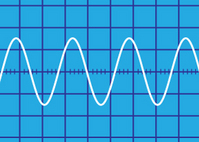
Perfect Sine Wave Transmission
VFLEX technology generates and transmits a perfect high quality sine wave, using the same technology that is found in high quality digital audio players, and is produced without distortion. The removal of distortion maximises power transmitted from the coil, therefore increasing detection depth and sensitivity. This also results in enhanced Target ID accuracy and greater immunity to both ground and environmental noise.
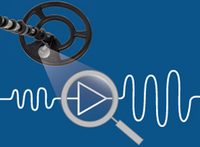
In-Coil Signal Booster
Weak target signals are amplified inside the coil, before the receive signal is sent up the coil cable where interference and signal loss can occur. This technique improves immunity to electrical noise by reducing false signals and increasing target signal strength, therefore improving detection depth and sensitivity.
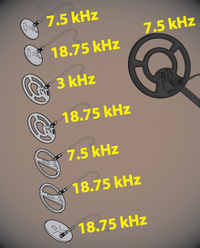
Coil Selectable Transmit Frequencies (not used in GO-FIND Series detectors)
By changing the coil you can change the detector’s frequency, maximising sensitivity and depth for a wide range of target types and conditions. VFLEX gives you three frequencies to choose from: 3 kHz, 7.5 kHz and 18.75 kHz.
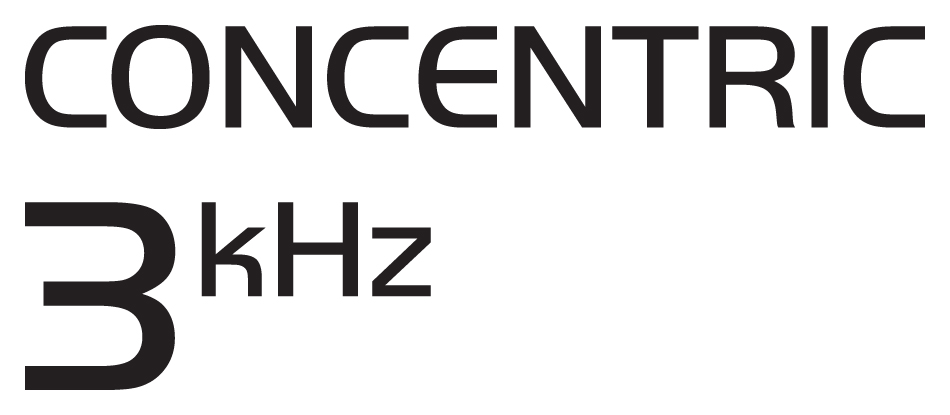 |
Low frequency for deep, large and/or high conductive targets, such as silver, copper, large gold rings and relics |
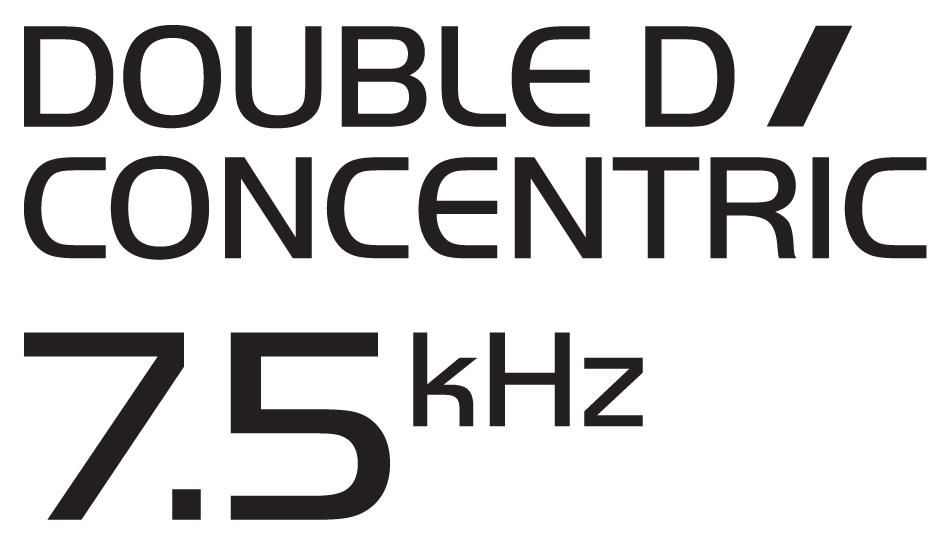 |
Medium frequency for all-round detecting, good sensitivity and detection depth for all target sizes |
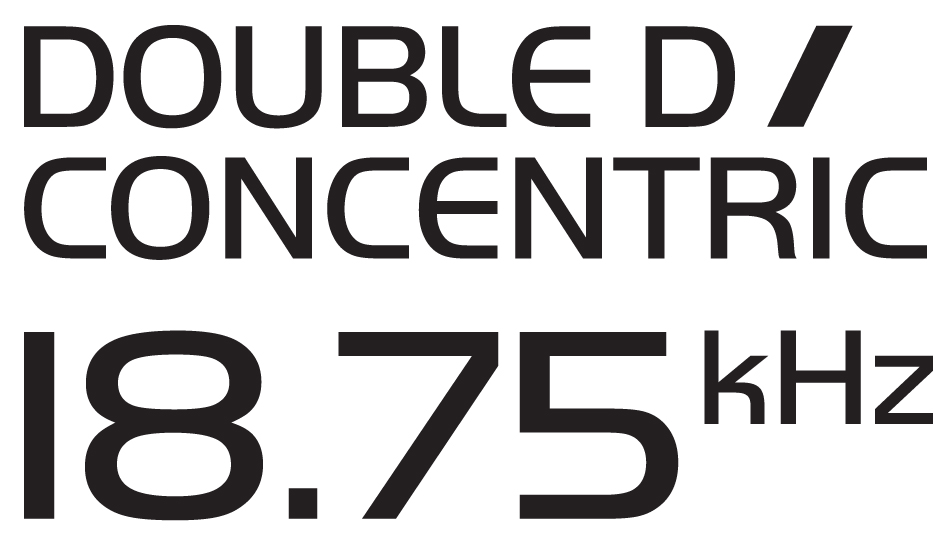 |
High frequency is very sensitive and ideal for jewellery, fine chains and sub-gram gold nuggets |
 DIF technology eliminates interference with an operating metal detector, when it is switched off, by disengaging the coil's magnetic field.
DIF technology eliminates interference with an operating metal detector, when it is switched off, by disengaging the coil's magnetic field.
DIF Technology is used in the advanced design of the PRO-FIND Series Pinpointers, it removes false signals and noise, commonly associated with other pinpointers.

Smartfind is Minelab’s unique two dimensional scale of discrimination. Smartfind graphically represents a target’s ferrous and conductive properties on the same display.
Smartfind is a feature of two Minelab metal detectors; E-TRAC and Explorer SE Pro.
E-TRAC Smartfind:
The horizontal axis rates the target on its size/conductivity (CO), ranging 1–50 from left to right. The vertical axis rates the extent of the target’s ferrous characteristics (FE), ranging 1–35 from top to bottom. A FE value of 1 represents low ferrous characteristics and a value of 35 represents high ferrous characteristics. Similarly, a CO value of 1 represents low conductivity and 50 represents high conductivity.

Explorer SE Pro Smartfind:
The vertical axis rates the target on its size/conductivity (CO), ranging 0–31 from bottom to top. The horizontal axis rates the extent of the target’s ferrous characteristics (FE), ranging 0–31 from right to left. A FE value of 0 represents low ferrous characteristics and a value of 31 represents high ferrous characteristics. Similarly, a CO value of 0 represents low conductivity and 31 represents high conductivity.


 W8 technology evenly distributes the detector’s weight, so that even after many hours of detecting you are unable to feel that any specific part of your body is carrying the detector’s weight. This means that you can detect for much longer without feeling any strain.
W8 technology evenly distributes the detector’s weight, so that even after many hours of detecting you are unable to feel that any specific part of your body is carrying the detector’s weight. This means that you can detect for much longer without feeling any strain.
W8 technology employs three biomechanical strategies to transfer the detector mass (weight) away from the operator’s arm:
These effectively remove the need for the arm’s muscles to tense in a flexion extension position while swinging the detector, and therefore prevent the muscle fatigue and soreness that is commonly experienced with metal detecting. W8 technology also allows the arm to freely medially rotate and abduct to swing the detector without the need to hold it up off the ground.
Read the W8 Technology Knowledge Base Article to find out more about W8 technology.